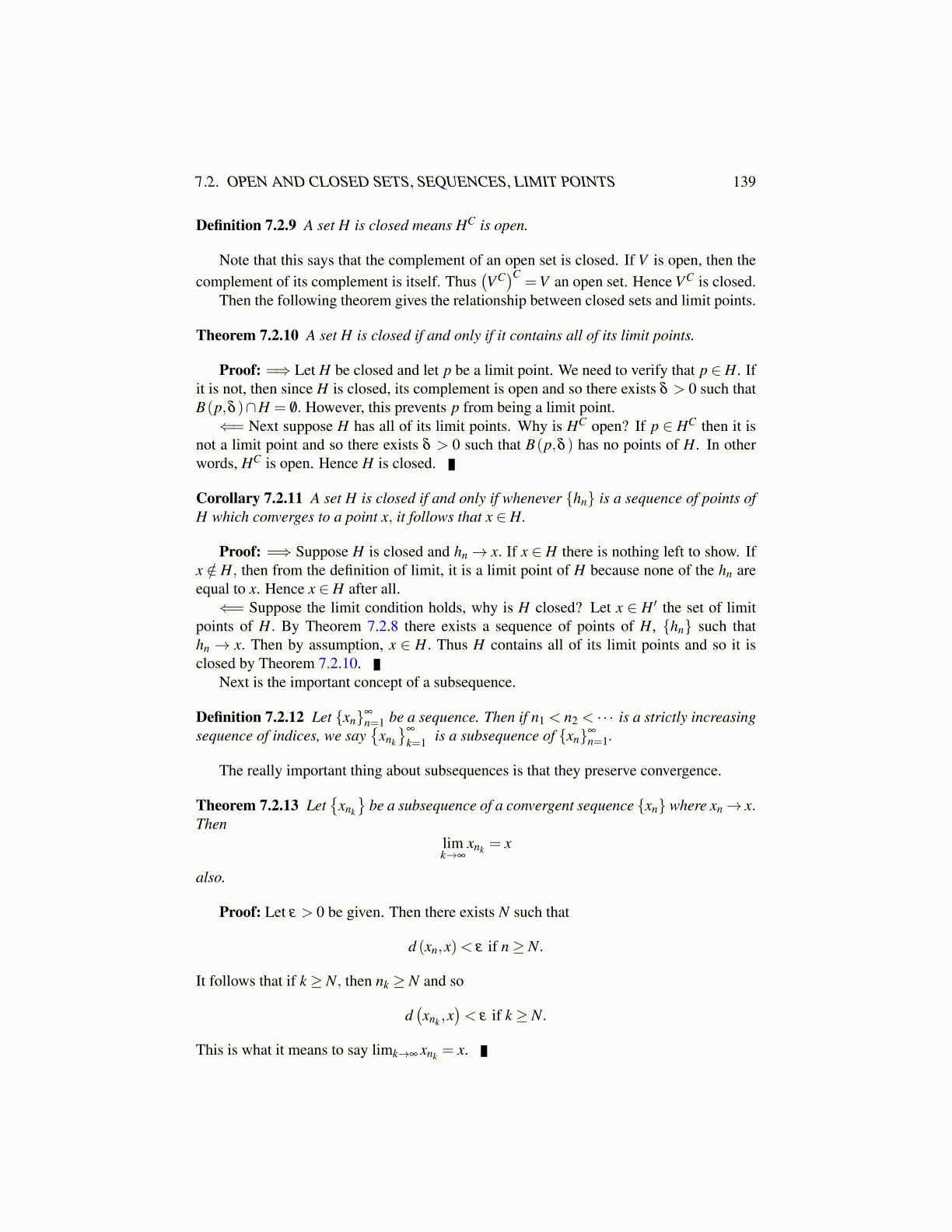
7.2. OPEN AND CLOSED SETS, SEQUENCES, LIMIT POINTS 139
Definition 7.2.9 A set H is closed means HC is open.
Note that this says that the complement of an open set is closed. If V is open, then thecomplement of its complement is itself. Thus
(VC)C
=V an open set. Hence VC is closed.Then the following theorem gives the relationship between closed sets and limit points.
Theorem 7.2.10 A set H is closed if and only if it contains all of its limit points.
Proof: =⇒ Let H be closed and let p be a limit point. We need to verify that p ∈ H. Ifit is not, then since H is closed, its complement is open and so there exists δ > 0 such thatB(p,δ )∩H = /0. However, this prevents p from being a limit point.⇐= Next suppose H has all of its limit points. Why is HC open? If p ∈ HC then it is
not a limit point and so there exists δ > 0 such that B(p,δ ) has no points of H. In otherwords, HC is open. Hence H is closed.
Corollary 7.2.11 A set H is closed if and only if whenever {hn} is a sequence of points ofH which converges to a point x, it follows that x ∈ H.
Proof: =⇒ Suppose H is closed and hn→ x. If x ∈ H there is nothing left to show. Ifx /∈ H, then from the definition of limit, it is a limit point of H because none of the hn areequal to x. Hence x ∈ H after all.⇐= Suppose the limit condition holds, why is H closed? Let x ∈ H ′ the set of limit
points of H. By Theorem 7.2.8 there exists a sequence of points of H, {hn} such thathn → x. Then by assumption, x ∈ H. Thus H contains all of its limit points and so it isclosed by Theorem 7.2.10.
Next is the important concept of a subsequence.
Definition 7.2.12 Let {xn}∞
n=1 be a sequence. Then if n1 < n2 < · · · is a strictly increasingsequence of indices, we say
{xnk
}∞
k=1 is a subsequence of {xn}∞
n=1.
The really important thing about subsequences is that they preserve convergence.
Theorem 7.2.13 Let{
xnk
}be a subsequence of a convergent sequence {xn} where xn→ x.
Thenlimk→∞
xnk = x
also.
Proof: Let ε > 0 be given. Then there exists N such that
d (xn,x)< ε if n≥ N.
It follows that if k ≥ N, then nk ≥ N and so
d(xnk ,x
)< ε if k ≥ N.
This is what it means to say limk→∞ xnk = x.